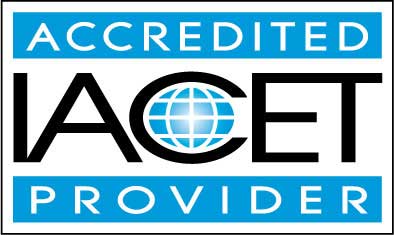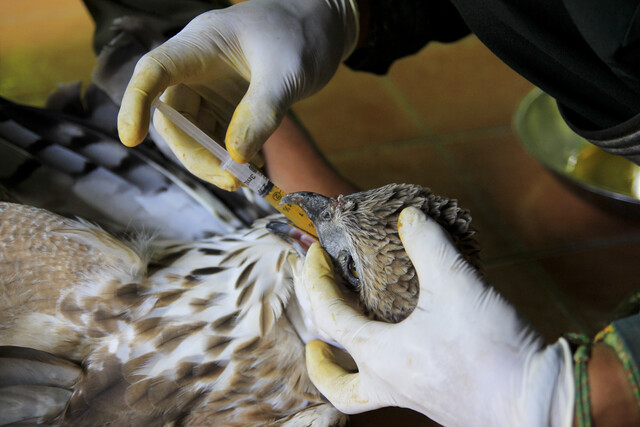Online Class: Spiders and Other Insects in North America

no certificate
with CEU Certificate*
-
12Lessons
-
20Exams &
Assignments -
146Students
have taken this course -
5Hours
average time -
0.5CEUs
Course Description
Dive into the mesmerizing and mysterious realm of insects and spiders with our captivating course, "Spiders and Other Insects of North America." Imagine yourself as an intrepid explorer, a curious adventurer, navigating through the densely populated but often overlooked world right beneath your feet. This course is a journey, a transformation, a new lens through which you will see the world. Whether you've always had an affinity for these remarkable creatures or you've approached them with a mix of awe and anxiety, this course promises to redefine your understanding and appreciation of the tiny architects of our ecosystems.
Every corner of North America presents a stage where the drama of life unfolds -- spiders spinning intricate webs, beetles marching industriously, and butterflies painting the sky with their magnificent wings. This course allows you to be a part of this vibrant living tapestry. Consider it a unique expedition into your own backyard, where each participant not only gains knowledge but also collects stories that enchant and educate.
Are you someone who craves knowledge about the natural world? Do you wish to break down the walls of misconception that may have held you back from appreciating these creatures? This course warmly welcomes you, making the unfamiliar become not just familiar, but fascinating. By the end of our journey together, you'll be equipped to lead engaging conversations about the ecosystems these creatures dwell in--whether you're talking to an audience of peers, presenting at a local community meeting, or simply chatting with friends and family.
Your initial hesitation might stem from a common discomfort around insects and arachnids, but we are here to provide a gentle yet enthusiastic nudge towards understanding. Through a seamless blend of immersive storytelling and meticulous science, we will explore the indispensable roles these creatures play, transforming fear into fascination and trepidation into triumph.
Imagine walking through a sunlit park, now equipped with an understanding of the crucial jobs performed by the insects buzzing around you. Picture confidently identifying the spider building a temporary home adjacent to your windowsill, drawing upon the rich knowledge you've accrued to explain its significance to an intrigued onlooker. This course will empower you with these skills.
Our approach is holistic, encompassing not just the scientific aspects but the intricate stories that each creature tells. We unravel age-old myths and dispel fears rooted in misunderstanding. With a focus on the different ecosystems, from the verdant Pacific Northwest to the arid landscapes of the Southwest, you'll engage with a well-rounded perspective of how diverse habitats nurture diverse life forms.
Moreover, you'll learn about the art of coexistence -- an essential skill in an increasingly environmentally conscious world. We delve into the safety protocols for living harmoniously with the more intimidating members of the insect and spider community, providing knowledge that meets curiosity with caution and turns apprehension into attentiveness.
Consider this course your personal guide to the unseen, bringing the intricate dance of ecology right to your doorstep. As you journey through each module, you'll feel a growing connection with these often-misunderstood creatures, equipped with insights that will pique your curiosity further, perhaps inspiring you to pursue deeper involvement with wildlife or conservation efforts.
The commitment is yours, and the journey promises to be magnificent. With each lesson, you'll venture further into understanding the captivating world of insects and spiders, emerging with a newfound perspective of respect and admiration. When you choose to enroll in "Spiders and Other Insects of North America," you're not just taking a course; you're choosing to see the world in a way few ever have and becoming part of a growing community of informed, passionate naturalists. So take the leap--the natural wonders of North America await your discovery, and their secrets are yours to unveil.
- Completely Online
- Self-Paced
- 6 Months to Complete
- 24/7 Availability
- Start Anytime
- PC & Mac Compatible
- Android & iOS Friendly
- Accredited CEUs

Course Lessons
Lesson 1. Creepy Crawlies: Heroes of Our Ecosystem
Cognitive-behavioral and virtual reality therapies offer effective methods for overcoming phobias of insects and spiders by gradually reducing fear responses. These approaches empower individuals to regain control and build tolerance in a supportive environment.Lesson 2. Mastering Fear: Steps to Overcome Entomophobia
While many experience mild discomfort or dislike towards insects, entomophobia is characterized by overwhelming fear that results in disproportionate reactions and avoidance behaviors. Early recognition and understanding of these fears are crucial for overcoming them, often requiring professional intervention.Lesson 3. Exploring the Intriguing World of Insects and Spiders
Insects and spiders, though often feared, have been critical to Earth's ecosystems for millions of years, playing roles in pollination, decomposition, and pest control. Understanding their importance can foster appreciation and reduce anxiety about these captivating creatures.Lesson 4. Fangs: Fact and Fiction
Insects and spiders, often feared for their fangs, are less threatening than commonly perceived. We learn to distinguish between the anatomy of spiders' fangs and insects' mandibles, understanding their limited danger and focusing on safety and awareness.Lesson 5. Unveiling the Truth: North America's Venomous Spiders
Black widows entice caution with potent venom, yet rarely cause fatalities, often misleadingly compared to rattlesnakes. Similarly, brown recluses conceal themselves from interaction, with awareness and proper safety measures ensuring peace of mind despite their necrotic sting reputation.Lesson 6. Eco-Diversity of the Pacific Northwest: From Landscapes to Arachnids
The beauty of the Pacific Northwest is reflected in its complex ecosystems, which support a great variety of spiders and insects crucial for ecological balance. Learning about these creatures encourages a harmonious coexistence and deepens our appreciation for their roles in these lush, diverse habitats.Lesson 7. Arachnids and Insects of the Southwest: A Deep Dive
Vivid desert landscapes of the Southwest are home to resilient spiders and insects that have astonishingly adapted to thrive amidst harsh conditions. Understanding and respecting these creatures, such as the black widow and bark scorpion, allows harmonious coexistence with their ecological benefits.Lesson 8. Exploring Arachnid and Insect Diversity on the Great Plains
The heartland known as the Great Plains is integral to American agriculture while simultaneously hosting a remarkable diversity of spiders and insects. Understanding these creatures enhances our appreciation and insight into ecological balance across varied climates within this area.Lesson 9. The Hidden World of Northeastern Bugs
The loud symphonies of cicadas and crickets fill the Northeastern atmosphere while these insects serve as food sources for various wildlife, underscoring their ecological importance. Similarly, ticks, though dangerous owing to their potential to spread diseases, are part of a complex interaction within the ecosystem, necessitating precautionary measures outdoors.Lesson 10. Understanding the Insects and Spiders of the Southeast
Encompassing states like Georgia and Florida, the Southeast's diverse climates from tropical coasts to temperate inland hills support a vast variety of life. Understanding the role of local insects and spiders shifts perspectives from fear to awe, underscoring their ecological importance.Lesson 11. Facing Your Fears: A Journey to Tranquility
Hypnosis aids in overcoming irrational fears of spiders by altering mental associations with these creatures, shifting from fear to neutrality. Coupled with exposure therapy's gradual familiarization through controlled encounters, it ensures individuals manage fear responses more effectively.Lesson 12. Understanding Scorpion Stings and Effective Treatments
In North America, spider and insect encounters can be managed safely with swift and knowledgeable first aid responses to prevent minor incidents from becoming serious. The black widow and brown recluse spiders are the main concerns, though most bites can be treated effectively, minimizing the risk of severe complications.
Learning Outcomes
- Demonstrate knowledge of safe techniques for managing encounters with insects and spiders to reduce fear and negative outcomes.
- Identify the ecological roles of insects and spiders in maintaining biodiversity and environmental balance within ecosystems.
- Identify strategies such as nature education and therapeutic interventions to manage and potentially overcome entomophobia, enhancing quality of life.
- Recognize the symptoms that differentiate normal anxiety responses from entomophobia to assess when professional help may be needed.
- Describe the safe and responsible use of pesticides to manage insect and spider populations while minimizing environmental impact.
- Identify the roles of insects and spiders in maintaining ecological balance, such as pest control, pollination, and nutrient recycling.
- Identify common symptoms and safety measures associated with bites from spiders, ants, and bedbugs to effectively manage and prevent adverse reactions.
- Recognize the anatomical differences between chelicerae and mandibles in arachnids and insects, respectively, and their functions in these creatures.
- Describe the effects of black widow and brown recluse bites on humans and recognize the appropriate steps for medical treatment.
- Identify the distinguishing characteristics and habitats of the black widow and brown recluse spiders to reduce encounters and enhance safety measures.
- Identify common spider and insect species in the Pacific Northwest and describe their habitats and behaviors, emphasizing their ecological importance and human interaction.
- Recognize the role of spiders and insects in maintaining ecological balance in the Pacific Northwest, such as pest control and nutrient recycling.
- Identify and describe the adaptations that enable spiders and insects to survive in the extreme climates of the American Southwest.
- Demonstrate mastery of lesson content at levels of 70% or higher.
Additional Course Information

- Document Your Lifelong Learning Achievements
- Earn an Official Certificate Documenting Course Hours and CEUs
- Verify Your Certificate with a Unique Serial Number Online
- View and Share Your Certificate Online or Download/Print as PDF
- Display Your Certificate on Your Resume and Promote Your Achievements Using Social Media

Choose Your Subscription Plan
No Certificate / No CEUs
This course only
| Includes certificate | X |
| Includes CEUs | X |
| Self-paced |

|
| Instructor support |

|
| Time to complete | 6 months |
| No. of courses | 1 course |
Certificate & CEUs
This course only
| Includes certificate |

|
| Includes CEUs |

|
| Self-paced |

|
| Instructor support |

|
| Time to complete | 6 months |
| No. of courses | 1 course |
Certificates & CEUs
Includes all 600+ courses
| Includes certificate |

|
| Includes CEUs |

|
| Self-paced |

|
| Instructor support |

|
| Time to complete | 12 Months |
| No. of courses | 600+ |
Certificates & CEUs
Includes all 600+ courses
| Includes certificate |

|
| Includes CEUs |

|
| Self-paced |

|
| Instructor support |

|
| Time to complete | 24 Months |
| No. of courses | 600+ |
Related Courses
-
 12 hours
1.2 CEUs
Serial Killers 101
+ More Info
12 hours
1.2 CEUs
Serial Killers 101
+ More Info
-
 9 hours
0.9 CEUs
Weight Loss Management
+ More Info
9 hours
0.9 CEUs
Weight Loss Management
+ More Info
-
 7 hours
0.7 CEUs
How to Win Arguments
+ More Info
7 hours
0.7 CEUs
How to Win Arguments
+ More Info
-
 6 hours
0.6 CEUs
The Bullying Solution: Strategies for a Kinder Classroom
+ More Info
6 hours
0.6 CEUs
The Bullying Solution: Strategies for a Kinder Classroom
+ More Info
-
 12 hours
1.2 CEUs
Adobe Photoshop
+ More Info
12 hours
1.2 CEUs
Adobe Photoshop
+ More Info
-
 5 hours
0.5 CEUs
US Citizenship Test Preparation
+ More Info
5 hours
0.5 CEUs
US Citizenship Test Preparation
+ More Info
-
 7 hours
0.7 CEUs
Basic English Speaking Skills
+ More Info
7 hours
0.7 CEUs
Basic English Speaking Skills
+ More Info
-
 5 hours
0.5 CEUs
Business Professionalism
+ More Info
5 hours
0.5 CEUs
Business Professionalism
+ More Info
-
 17 hours
1.7 CEUs
Introduction to SQL
+ More Info
17 hours
1.7 CEUs
Introduction to SQL
+ More Info
-
 6 hours
0.6 CEUs
Emotional Healing 101
+ More Info
6 hours
0.6 CEUs
Emotional Healing 101
+ More Info
-
 2 hours
0.2 CEUs
Understanding Insurance Types
+ More Info
2 hours
0.2 CEUs
Understanding Insurance Types
+ More Info
-
 5 hours
0.5 CEUs
Habits of Millionaires
+ More Info
5 hours
0.5 CEUs
Habits of Millionaires
+ More Info
-
 9 hours
0.9 CEUs
Relaxation 101
+ More Info
9 hours
0.9 CEUs
Relaxation 101
+ More Info
-
 7 hours
0.7 CEUs
Introduction to Logic
+ More Info
7 hours
0.7 CEUs
Introduction to Logic
+ More Info
-
 8 hours
0.8 CEUs
Teaching Grammar to ESL Students
+ More Info
8 hours
0.8 CEUs
Teaching Grammar to ESL Students
+ More Info
-
 5 hours
0.5 CEUs
Positive Parenting Techniques
+ More Info
5 hours
0.5 CEUs
Positive Parenting Techniques
+ More Info
-
 7 hours
0.7 CEUs
Introduction to Ethics
+ More Info
7 hours
0.7 CEUs
Introduction to Ethics
+ More Info
-
 5 hours
0.5 CEUs
Home Safety
+ More Info
5 hours
0.5 CEUs
Home Safety
+ More Info
-
 13 hours
1.3 CEUs
Health Education 101
+ More Info
13 hours
1.3 CEUs
Health Education 101
+ More Info
-
 5 hours
0.5 CEUs
The Art of Setting Goals
+ More Info
5 hours
0.5 CEUs
The Art of Setting Goals
+ More Info
-
 5 hours
0.5 CEUs
Child Safety for Parents
+ More Info
5 hours
0.5 CEUs
Child Safety for Parents
+ More Info
-
 3 hours
0.3 CEUs
Etiquette 101
+ More Info
3 hours
0.3 CEUs
Etiquette 101
+ More Info
-
 3 hours
0.3 CEUs
The Art of Breathing
+ More Info
3 hours
0.3 CEUs
The Art of Breathing
+ More Info
-
 4 hours
0.4 CEUs
Pre-Columbian Mythology
+ More Info
4 hours
0.4 CEUs
Pre-Columbian Mythology
+ More Info
-
 9 hours
0.9 CEUs
Child Safety for Teachers
+ More Info
9 hours
0.9 CEUs
Child Safety for Teachers
+ More Info




